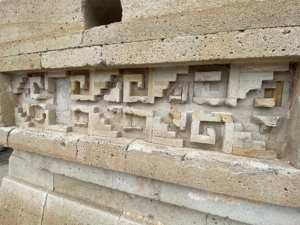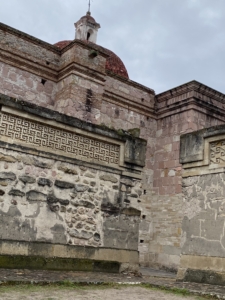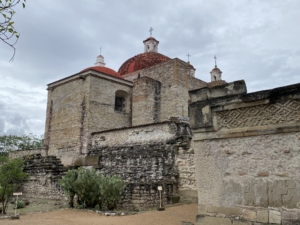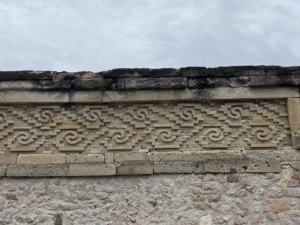Allison’s public comment at final map hearing 4/24/24
I’m speaking for those left fallen through the cracks amidst other regional politics.
Last week my daughter’s teacher told me, “Keep fighting for us.”
She’s a US born graduate level educated Latina bilingual educator. She said to me, “I know my place. When I speak up for us Latinos in education I get dismissed or punished. When I need to advocate for bilingual education, I have my White teaching counterpart speak out for us because they’ll take her seriously. Allison, when you speak for us they’ll listen, they’ll believe you, and they’ll know you’re not acting out of self interest but because it’s the right thing to do.”
Mitla is a prehispanic archeological site deep in the Valle Central de Oaxaca, Mexico. This was the political and religious center of the Zapotec and Mixtec people with stone walls adorned with intricate friezes of polished cut stones fitted together without the use of mortar, uniquely only found in this location. During the 16th century Spanish conquest, missionaries built a church in the middle of it, leaving much of the site intact, only destroying “a little bit” of their most sacred place of worship, reusing the stones from the walls of Mitla to build the church and forcing the conversion of the people there. The church is now an integral part of the history and faith of that country, but I saw how locals ignored the hulking structure in the middle of the site when they talked about the significance of Mitla. The harm remains centuries later despite the intentions of that benevolent agenda.
I appreciate the efforts to approximate the Hispanic/Latino priority created by Maps 2-4 in subsequent scenarios, however, all of these come up short of the eliminated map scenario that prioritized Hispanic/Latino voting rights. It was wrong to compromise the district’s most underrepresented protected class under the California Voting Rights Act. Hundreds of Hispanic/Latino voters were left on the cutting room floor before the board could even vote on it.
It will take a collective shift in our systems, culture, and values to truly invite family engagement and bridge persistent opportunity gaps from underrepresented groups in the district. It can be done – with critical thought, imagination, prioritization, and love.





Leave a Reply
Want to join the discussion?Feel free to contribute!